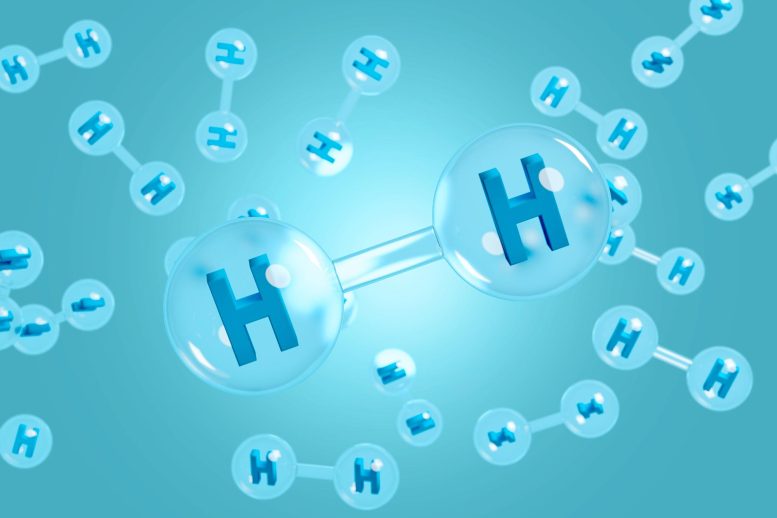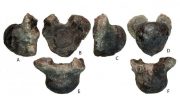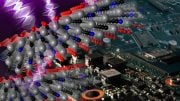
Researchers at the University of Sydney have discovered that adding molybdenum to steel, combined with metal carbides, significantly improves its ability to trap hydrogen, potentially solving the issue of hydrogen embrittlement. This breakthrough, using advanced cryogenic atom probe tomography, could pave the way for large-scale hydrogen transport and storage solutions, essential for transitioning to a hydrogen economy.
Solving embrittlement is a multi-billion-dollar question.
Why hydrogen causes steels to become brittle and crack is the great conundrum of engineers and researchers looking to develop large-scale transport and storage solutions for the hydrogen age – an era which Australia hopes to lead by 2030.
They may now be one step closer to understanding how hydrogen affects steels, thanks to new University of Sydney research. The researchers found adding the chemical element molybdenum to steel reinforced with metal carbides markedly enhances its ability to trap hydrogen.
Published in Nature Communications, the finding was demonstrated by a team which was led by Pro Vice-Chancellor (Research – Enterprise and Engagement) Professor Julie Cairney and Dr. Yi-Sheng (Eason) Chen, and included Dr. Ranming Liu and Ph.D. candidate Pang-Yu Liu.
They used an advanced microscopy technique pioneered at the University of Sydney, known as cryogenic atom probe tomography, allowing for direct observation of hydrogen distribution in materials.
“We hope this study will get us closer to revealing exactly why hydrogen embrittlement occurs in steel, paving the way for large-scale solutions to hydrogen transport and storage,” said Professor Cairney, who is based at the Australian Centre for Microscopy and Microanalysis, where the research was undertaken.
Hydrogen embrittlement is a process whereby hydrogen causes high-strength materials like steel to become brittle and crack. The researchers say it is one of the biggest obstacles to the transition to a hydrogen economy as it prevents hydrogen from being effectively stored and transported at high pressures. This makes understanding and solving embrittlement a multi-billion-dollar question for the renewables market.
“The future of a large-scale hydrogen economy largely comes down to this issue. Hydrogen is notoriously insidious; as the smallest atom and molecule, it seeps into materials, then cracks and breaks them. To be able to effectively produce, transport, store, and use hydrogen on a large scale, this is not ideal,” said Dr Chen.
Deloitte estimates the clean hydrogen market could reach USD$1.4 trillion by 2050.
How the process worked
Molybdenum was added to the steel, combined with other elements to form an extremely hard ceramic known as ‘carbide’. Carbides are often added to steels to increase their durability and strength.
Using their advanced microscopy technique, the researchers saw the trapped hydrogen atoms were at the core of the carbide sites, suggesting the addition of molybdenum helps trap hydrogen. This was compared with a benchmark titanium carbide steel which did not show the same hydrogen trapping mechanism.
“The addition of molybdenum helped boost the presence of carbon vacancies – a defect in carbides that can effectively capture hydrogen,” said Dr Chen.
The added molybdenum represented only 0.2 percent of the total steel, which the researchers say makes it a cost-effective strategy for reducing embrittlement. The researchers believe niobium and vanadium may also have a similar effect on steels.
Reference: “Engineering metal-carbide hydrogen traps in steels” by Pang-Yu Liu, Boning Zhang, Ranming Niu, Shao-Lun Lu, Chao Huang, Maoqiu Wang, Fuyang Tian, Yong Mao, Tong Li, Patrick A. Burr, Hongzhou Lu, Aimin Guo, Hung-Wei Yen, Julie M. Cairney, Hao Chen and Yi-Sheng Chen, 25 January 2024, Nature Communications.
DOI: 10.1038/s41467-024-45017-4
The study was funded by the Australian Research Council’s Linkage Project, an Early Career Industry Fellowship, a Future Fellowship, LIEF, a 2019 University of Sydney (Postdoctoral) Fellowship, and the Taiwan-University of Sydney Scholarship.









Something that works in the lab cannot always be scaled up to an industrial level. There was a time when 90% of the world’s molybdenum came from a 1 square-mile mountain top in Climax, Colorado. That was at a time when the primary use of molybdenum was for making tool-steel for machining. Making storage tanks for storing hydrogen for the transportation industry will probably require a couple orders of magnitude increase in production at a time when that original deposit has been virtually exhausted. Not surprisingly, China is now the world’s largest producer, and prices hit a record high last year. [The Colorado Climax mine is currently operating again, at reduced levels, after being closed for years. It is anticipated to be closed permanently after about 2030.] It is fashionable to be against mining in the US. Most people don’t know what side of their toast is buttered and act as if rare minerals are produced, with no energy costs, from pixie dust.